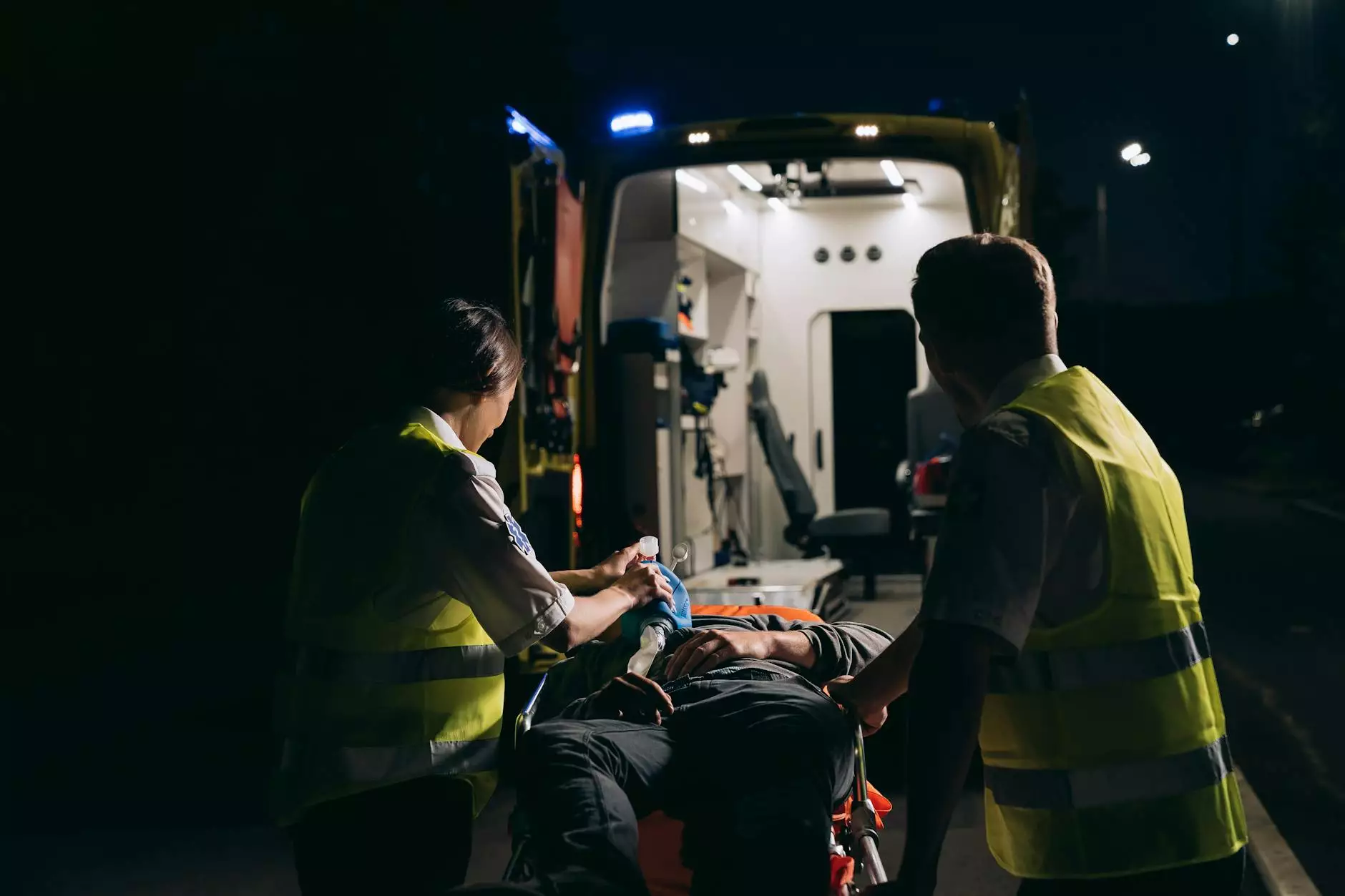Public Safety DAS: Revolutionizing Emergency Communications and Enhancing Public Security

In today’s rapidly evolving world, ensuring public safety has become a paramount priority for businesses, governments, and communities alike. Central to this mission is the deployment of advanced communication infrastructure that guarantees reliable, efficient, and widespread connectivity during emergencies. Among the most transformative solutions is Public Safety DAS (Distributed Antenna Systems), a cutting-edge technology designed specifically to bolster emergency response capabilities. This comprehensive guide explores how public safety DAS integrates into modern telecommunications, supports critical infrastructure, and ultimately saves lives.
Understanding Public Safety DAS: What It Is and How It Works
At its core, public safety DAS is a specialized form of Distributed Antenna System built to enhance cellular reception for emergency services within large facilities and dense urban environments. Unlike commercial DAS designed primarily for enhancing everyday mobile coverage, public safety DAS operates on dedicated frequencies and power levels to prioritize emergency communications. This ensures that first responders, law enforcement, fire departments, and other emergency personnel maintain robust connectivity, even in challenging situations.
Key Components of Public Safety DAS
- Base Station Transmitters: Connect to public safety radio networks and transmit signals across the system.
- Distributed Antennas: Strategically placed throughout buildings, tunnels, and campuses to distribute radio signals uniformly.
- Remote Units: Act as signal amplifiers and controllers, managing signal strength and coverage areas.
- Control Units: Provide system management, monitoring, and ensure compliance with safety standards.
The Role of Public Safety DAS in Emergency Response
The deployment of public safety DAS is driven by the imperative need for reliable communication during crises. Traditional cellular infrastructure often falters in large facilities or densely populated urban centers where signal degradation can occur due to physical barriers, high user density, or infrastructural limitations. Public safety DAS addresses these challenges by providing a dedicated, resilient network that ensures seamless communication for emergency responders.
Advantages of deploying public safety DAS include:
- Enhanced Coverage: Extends communication signals to hard-to-reach areas such as basements, underground tunnels, and high-rise buildings.
- Priority Routing: Allocates dedicated frequency channels for emergency calls, preventing network congestion from civilian mobile traffic.
- System Redundancy and Reliability: Equipped with backup power supplies and failover mechanisms to maintain operation during power outages or system failures.
- Improved Response Times: Facilitates faster decision-making by ensuring clear, uninterrupted communication channels.
Legal and Regulatory Framework Supporting Public Safety DAS
Implementing public safety DAS is governed by stringent standards and regulations set by authorities such as the Federal Communications Commission (FCC) and the National Fire Protection Association (NFPA). These regulations mandate that all public safety communication systems adhere to specific performance criteria, including coverage, capacity, and resilience requirements. Organizations like teleco.com offer comprehensive solutions that align with these standards, ensuring compliance and optimal system performance.
Integration of Public Safety DAS with Existing Infrastructure
Successful deployment of public safety DAS requires meticulous planning, including integration with existing communication infrastructure. This involves conducting thorough site surveys, assessing building layouts, and identifying critical areas requiring enhanced coverage. The integration process focuses on compatibility with current public safety radio networks, ensuring that the DAS system complements — rather than conflicts with — existing emergency communication channels.
Key steps include:
- Performing detailed environmental assessments
- Designing tailored system architectures for optimal coverage
- Ensuring compliance with regulatory standards
- Implementing scalable solutions for future expansion
- Regular testing and maintenance to sustain system integrity
The Business Case for Investing in Public Safety DAS
Organizations investing in public safety DAS stand to benefit from enhanced safety measures, regulatory compliance, and increased public trust. Whether operating a large commercial complex, industrial facility, transportation hub, or educational campus, deploying this technology can significantly mitigate risks associated with emergency response failures.
Additional benefits include:
- Reduced Liability: Demonstrates proactive commitment to safety, potentially lowering legal liabilities
- Operational Continuity: Ensures continuous communication during crises, minimizing downtime
- Increased Resilience: Fortifies infrastructure against natural disasters, terror threats, and technical failures
- Brand Reputation Enhancement: Positions the organization as a responsible entity prioritizing safety
Emerging Technologies and Future Trends in Public Safety DAS
The landscape of public safety DAS is continually evolving with emerging innovations. Advancements such as 5G integration, Internet of Things (IoT) connectivity, and artificial intelligence (AI) are poised to transform emergency communication networks further. These technologies promise higher data speeds, smarter analytics, and more adaptive coverage solutions, enabling first responders to operate more effectively in an array of scenarios.
Future trends include:
- 5G-Enabled Public Safety DAS: Providing ultra-reliable, low-latency communications for high-stakes operations
- IoT Integration: Connecting sensors, cameras, and environmental monitors for real-time situational awareness
- AI-Driven Analytics: Enhancing decision-making and predictive capabilities in crisis scenarios
- Hybrid Systems: Combining public safety DAS with other communication platforms for maximum resilience
Choosing the Right Partner for Public Safety DAS Deployment
Success in implementing public safety DAS hinges on selecting experienced and reliable technology providers. A top-tier partner like teleco.com offers end-to-end solutions, from initial site assessment and system design to installation, integration, and ongoing maintenance. Key factors to consider when choosing a provider include:
- Expertise in public safety and emergency communication standards
- Proven track record with similar projects
- Comprehensive understanding of local regulations and compliance requirements
- Robust customer support and maintenance services
- Innovative approach to integrating emerging technologies
Conclusion: The Critical Importance of Public Safety DAS
Investing in public safety DAS is an essential step towards creating resilient, secure, and responsive emergency communication networks. As threats to public safety become more complex and infrastructure demands grow, robust DAS solutions will play an increasingly vital role in protecting lives and property. Organizations that proactively adopt these advanced systems not only comply with regulatory standards but also demonstrate a profound commitment to community safety and operational excellence.
With continuous technological innovation and strategic deployment, public safety DAS will remain at the forefront of emergency response infrastructure, ensuring that help is always just a call away. Partnering with industry leaders like teleco.com ensures your organization benefits from tailored, future-proof solutions designed to meet today’s safety challenges and tomorrow’s technological advancements.
Get Started with Public Safety DAS Today
If your organization is committed to elevating its emergency response capabilities, now is the time to explore comprehensive public safety DAS solutions. Contact teleco.com for a detailed consultation, system design, and installation services. Together, we can build a safer, more resilient future for your community, employees, and stakeholders.









